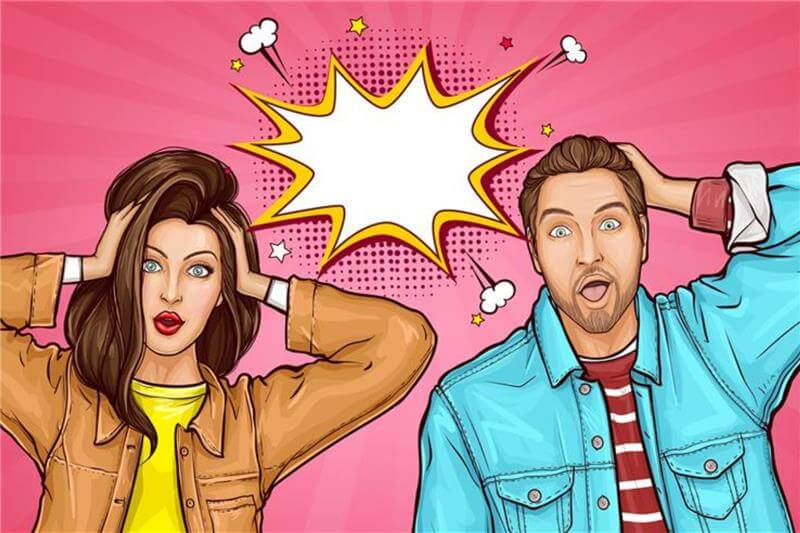BLOGS
How Comic Book Characteristics Shape Iconic Stories and Art
- September 24, 2025
- Updated: September 24, 2025
- 0 Comments

Comic books are more than just illustrated stories; they are a unique form of storytelling where art and narrative, comic book characteristics creates unforgettable experiences. The defining characteristics of comic books, including panel layouts, color palettes, dialogue style, and character development, play a crucial role in shaping the way readers perceive and connect with the story. Each element, whether it’s the pacing of action sequences or the visual symbolism embedded in illustrations. Contributes to the overall impact of the comic. These characteristics not only define the identity of individual comics but also influence trends in visual storytelling across media. Understanding these traits helps creators, fans, and enthusiasts appreciate why certain stories endure. Also, why do some artworks become iconic in popular culture?



The Role of Storytelling in Comic Book Characteristics
One of the most significant comic book characteristics is storytelling. Unlike traditional novels, comic books rely on a dynamic combination of visuals and text to convey narrative. Making the story’s presentation as important as the plot itself. Effective storytelling in comics requires careful planning of panel sequences, pacing, and dialogue to guide readers seamlessly through the plot. Every frame serves a purpose, whether it builds suspense, develops characters, or highlights key moments. This balance between visual cues and written narrative allows readers to immerse themselves fully in the story world. Iconic comics often stand out because their storytelling techniques resonate on both emotional and visual levels, creating memorable experiences. Understanding how storytelling shapes comic book characteristics. Gives insight into why certain series captivate audiences and endure as cultural landmarks in literature and art.Visual Art as a Key Comic Book Characteristic
Visual art is one of the most striking comic book characteristics, defining the medium identity and impact. The artistry within a comic, the line work, coloring, shading, and composition, guides the reader’s eye. Also, sets the tone for each scene. Panel layouts, perspective, and background details all contribute to how the story is perceived. Often conveying emotion or action without words. Iconic comic books are frequently recognized for their distinctive visual styles, which can become as memorable as the characters themselves. Illustrators use color palettes, textures, and dynamic poses to evoke mood and emphasize critical moments. Making the visual narrative inseparable from the written story. By understanding the role of visual art as a core comic book characteristic, readers and creators alike can appreciate how the marriage of images and text shapes the immersive, enduring experience that makes comics a celebrated form of storytelling.How Characters Drive Comic Book Characteristics
Characters are central to comic book characteristics, serving as the heartbeat of the story. The primary connection between readers and the narrative. Well-developed characters give depth to the plot, shaping the comic’s tone, conflict, and overall appeal. Heroes, villains, and supporting figures are carefully designed not only visually. It also in personality, dialogue, and motivations, all of which contribute to the comic’s distinctive traits. Readers invest emotionally in characters, and their choices, growth, and interactions often define the pacing and structure of the story. Even minor characters can influence how panels are arranged or how action sequences unfold, reinforcing visual storytelling. Book publishing services Iconic comics often become memorable because their characters are unique, relatable, and compelling. Understanding how characters drive comic book characteristics helps explain why some series resonate deeply with audiences. Also, leave lasting impressions in popular culture.Panels and Layouts: Essential Comic Book Characteristics
Panels and layouts are fundamental comic book characteristics, shaping the rhythm, pacing, and flow of the story. Each panel acts as a visual snapshot, guiding readers through the narrative. While controlling the timing of events and the intensity of action. The arrangement of panels, whether uniform grids, dynamic diagonals, or overlapping sequences, can heighten drama. Also, build suspense, or provide comedic relief which is good for Amazon KDP. Thoughtful layouts also influence how dialogue and visual elements interact, ensuring that readers absorb key details without confusion. Artists often use size, shape, and spacing strategically to emphasize critical moments or convey motion, emotion, and perspective. By understanding panel composition, readers gain insight into how creators manipulate space to tell a story effectively. These visual decisions are essential comic book characteristics. Making layouts not just functional but a powerful storytelling tool that defines the reading experience and enhances the art form.Color Palettes and Mood: Comic Book Characteristics Explained
Color palettes play a pivotal role in defining comic book characteristics. Directly influencing the mood and emotional impact of each scene on social media platforms like Tiktok, Instagram and Facebook. Artists carefully select colors to convey atmosphere, highlight action, and differentiate characters or settings. Warm tones can evoke excitement, passion, or tension, while cooler shades often suggest calm, mystery, or melancholy. Beyond mood, color also guides the reader’s eye across panels. Ensuring that the narrative flows smoothly and key details are emphasized. Iconic comic books often feature a signature palette that becomes instantly recognizable, contributing to the work’s identity and appeal. Additionally, shifts in color within a story can signal changes in time, emotion, or narrative focus, enhancing storytelling depth. By understanding the interplay between color and narrative, readers and creators can appreciate how book publishing services shape the atmosphere. Reinforce themes, and elevate the overall artistic impact of the medium.
Dialogue and Speech Bubbles in Comic Book Characteristics
Dialogue and speech bubbles are crucial comic book characteristics that bring characters and stories to life. Unlike traditional prose, comic books rely on concise, well-crafted dialogue to convey personality. Advance the plot, and create emotional resonance within limited space. Speech bubbles, captions, and thought balloons guide readers through conversations and internal monologues, ensuring clarity and pacing. The shape, size, and style of these elements often reflect tone, intensity, or emotion. Jagged bubbles for shouting, rounded ones for calm speech, or cloud-like shapes for thoughts. Effective use of dialogue in tandem with visuals allows for nuanced storytelling. Giving insight into character motivations and relationships while maintaining narrative momentum. Iconic comics often excel in this balance, making their dialogue memorable and engaging. Understanding how dialogue and speech bubbles shape comic book characteristics highlights the synergy between written words and visual storytelling that defines the medium.Symbolism as a Core Comic Book Characteristic
Symbolism is a powerful comic book characteristic that adds depth and layers of meaning to stories. Through recurring images, motifs, or visual metaphors, artists and writers communicate themes, emotions, and messages without relying solely on dialogue or narration. Symbols can be subtle, like a character’s signature accessory or color scheme. Or overt, such as emblematic logos representing ideals or conflict. These visual cues enhance storytelling by creating connections between events and characters. Also, broader themes, allowing readers to interpret multiple levels of meaning. Symbolism also helps establish tone and reinforces the narrative’s emotional impact, making moments more memorable. Iconic comics often employ consistent symbolic imagery that becomes instantly recognizable and meaningful to fans. By understanding symbolism as a core comic book characteristic, readers gain a deeper appreciation of the artistry involved. The way subtle visual elements can profoundly influence story perception.Themes and Motifs Shaping Comic Book Characteristics
Themes and motifs are essential comic book characteristics, providing structure and depth to stories while guiding reader interpretation. Recurring ideas such as heroism, justice, identity, or conflict create a framework that shapes characters’ journeys and plot development. Motifs, visual or narrative elements repeated throughout a comic, reinforce these themes, adding coherence and emotional resonance. For example, a recurring symbol, color, or background element can subtly highlight a character’s internal struggle. Hint at future plot developments. These thematic patterns also allow readers to connect with the story on a deeper level. Making narratives more memorable and impactful. Iconic comic books often stand out because their themes and motifs are carefully interwoven with dialogue, art, and pacing. Understanding how themes and motifs influence comic book characteristics reveals why certain stories resonate. Also, endure, and become defining works in the world of visual storytelling.The Evolution of Comic Book Characteristics Over Time
The evolution of comic book characteristics reflects changes in storytelling, art styles, and cultural trends over time. Early comics focused on simple narratives, bold colors, and straightforward panel layouts, emphasizing action and heroism. As the medium matured, artists and writers began experimenting with complex character development, innovative panel designs, and diverse themes, expanding the possibilities of visual storytelling. Technological advances in printing and digital tools have also influenced color palettes, textures, and illustration techniques, allowing for more detailed and immersive artwork. Contemporary comics often blend genres, incorporate social commentary, and explore psychological depth, showcasing how comic book characteristics adapt to audience expectations and cultural shifts. By tracing these changes, readers and creators can appreciate the medium’s growth and versatility. Understanding the evolution of comic book characteristics highlights the ongoing dialogue between art, narrative, and society that makes comics a continually vibrant and influential form of storytelling.Comic Book Characteristics That Influence Reader Engagement
Certain comic book characteristics play a crucial role in capturing and maintaining reader engagement. Elements like dynamic panel layouts, vibrant color palettes, compelling characters, and well-timed dialogue work together to draw readers into the story world. Action sequences, emotional moments, and cliffhangers are carefully crafted to maintain pacing and excitement, ensuring that readers stay invested from page to page. Visual cues such as facial expressions, body language, and symbolic imagery further enhance immersion, allowing audiences to connect emotionally with characters and plot developments. Additionally, themes and motifs that resonate with readers’ experiences or interests strengthen engagement by creating relatability. Iconic comics often succeed because their combination of art, narrative, and design encourages repeated readings and discussion among fans. Understanding how these comic book characteristics influence reader engagement highlights the thoughtful interplay between storytelling and visual artistry that defines the medium.Understanding Genre Through Comic Book Characteristics
Genre is a defining factor in shaping comic book characteristics, influencing narrative style, visual design, and thematic focus. Superhero comics, for example, emphasize bold action sequences, dynamic poses, and vibrant color palettes, while horror comics rely on shadows, muted tones, and suspenseful pacing to evoke tension. Science fiction often incorporates futuristic technology and imaginative settings, whereas romance or slice-of-life comics highlight emotional expression and intimate interactions. These genre-specific characteristics guide both creators and readers, establishing expectations for storytelling, artwork, and character development. Understanding genre through comic book characteristics also helps readers appreciate the nuances that distinguish one type of comic from another. By analyzing how different genres shape artistic choices and narrative techniques, fans and creators alike gain insight into the medium’s versatility. Recognizing these distinctions deepens appreciation for the craft and highlights why comics continue to captivate diverse audiences across genres.
How autobiography writers Can Learn from Comic Book Characteristics
Autobiography writers can draw valuable lessons from comic book characteristics, particularly in storytelling and visual narrative techniques. Comics excel at condensing complex events into clear, engaging sequences while balancing dialogue, imagery, and pacing. Similarly, autobiographical writing benefits from structuring personal experiences in a way that captures attention, emphasizes key moments, and conveys emotion effectively. Techniques such as creating vivid scenes, using symbolic elements, or highlighting pivotal events mirror how comics convey story and meaning through panels and visuals. Incorporating these strategies helps autobiography writers maintain reader engagement and provide a more immersive experience. Understanding timing, tension, and character development in comic storytelling can inspire writers to craft narratives that resonate emotionally and thematically. By studying comic book characteristics, autobiography writers gain insight into blending structure, detail, and creativity to make personal stories both compelling and memorable.Hire a speech writer: Lessons from Comic Book Dialogue
Hire a speech writer, they can benefit from understanding comic book characteristics, especially the use of dialogue to convey emotion, intent, and personality. Comic book dialogue is concise yet impactful, delivering essential information while maintaining the character’s voice and advancing the plot. Speech writers can apply this principle by crafting speeches that are clear, engaging, and memorable, ensuring every word serves a purpose. The use of pacing, tone, and emphasis in comic book dialogue provides lessons on how to hold an audience’s attention and build emotional resonance. Additionally, visual cues in comics, such as speech bubble placement and style, demonstrate how context and delivery shape perception, something a speech writer can translate into vocal tone, pauses, and emphasis. By studying comic book characteristics, speech writers can create speeches that are both powerful and accessible, capturing attention and leaving a lasting impact on listeners.Wikipedia services and Documenting Comic Book Characteristics
Wikipedia services play an important role in documenting and preserving comic book characteristics for public reference and academic study. By creating well-researched entries, these services ensure that iconic stories, artistic styles, and influential creators are accurately represented for fans, scholars, and future generations. Detailed documentation of comic book traits, such as panel structure, visual symbolism, dialogue style, and thematic motifs, helps readers understand the evolution of the medium and its cultural impact. Wikipedia also provide a platform to track contributions from artists, writers, and editors, highlighting how different individuals shape the distinctive characteristics of various comics. This transparency and organization make it easier for enthusiasts and researchers to explore patterns, genres, and innovations across the medium. Understanding the role of Wikipedia services in chronicling comic book characteristics emphasizes the importance of accessible knowledge and the preservation of comics as a significant art form.Ghostwriters in music and Storytelling Techniques in Comic Book Characteristics
Ghostwriters in music can learn valuable storytelling techniques from comic book characteristics, particularly in structuring narratives and creating emotional impact. Just as comic books combine visuals, dialogue, and pacing to immerse readers, music ghostwriters must craft lyrics and melodies that convey a story clearly and compellingly. Elements such as tension, rhythm, and character-driven scenarios in comics can inspire ghostwriters to build songs with engaging arcs, emotional highs and lows, and memorable hooks. The use of symbolism, motifs, and recurring themes in comics also teaches ghostwriters how to layer meaning into their work, making lyrics resonate on multiple levels. By studying how comic book characteristics shape narrative flow and audience engagement, ghostwriters in music can refine their storytelling approach, ensuring songs connect with listeners both emotionally and intellectually. These lessons illustrate the cross-medium applicability of comic book storytelling techniques.



